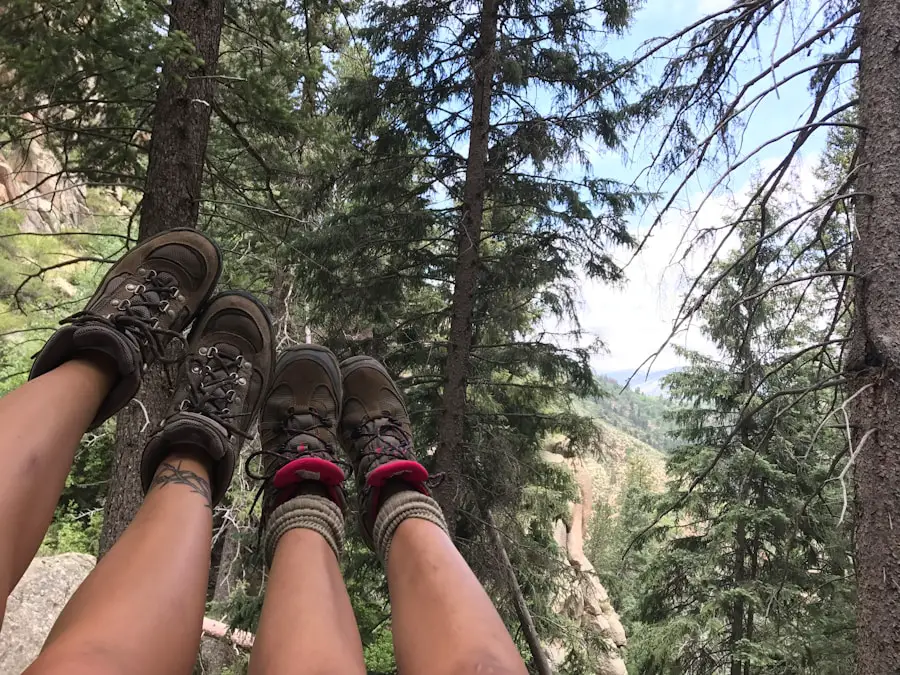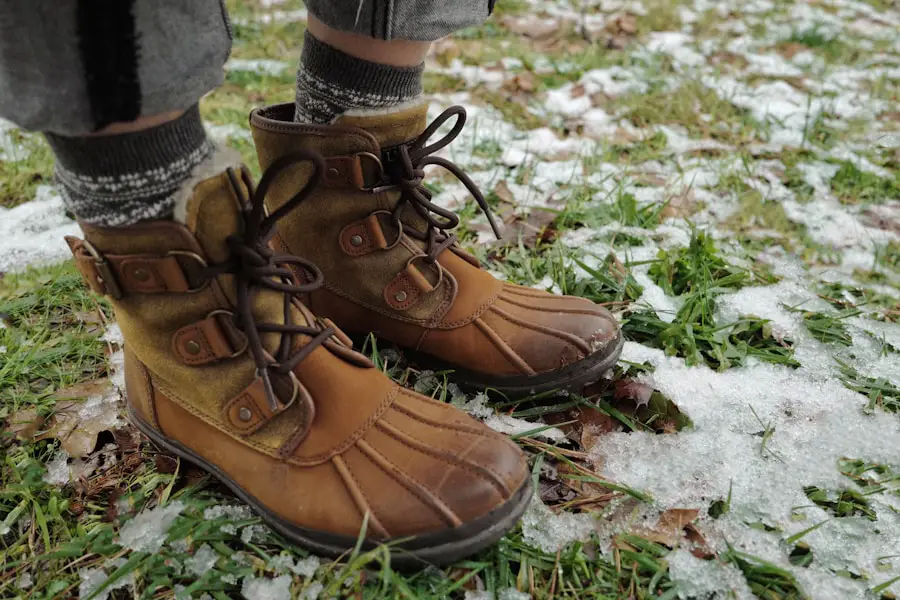Footwear plays a pivotal role in outdoor activities, serving as the foundation for comfort, safety, and performance. Whether trekking through rugged terrains, navigating rocky trails, or simply enjoying a leisurely walk in the park, the right shoes can significantly impact the overall experience. Proper footwear not only protects the feet from injuries such as blisters, sprains, and punctures but also enhances stability and traction on various surfaces.
The importance of selecting appropriate footwear cannot be overstated, as it directly influences endurance and enjoyment during outdoor pursuits. Moreover, the right footwear can help prevent fatigue and discomfort, which are common complaints among outdoor enthusiasts. When engaging in activities like hiking or climbing, the feet endure significant stress and strain.
Shoes designed for specific outdoor conditions provide the necessary support and cushioning to mitigate these effects. For instance, a well-constructed hiking boot can absorb shock and provide arch support, allowing adventurers to traverse long distances without succumbing to pain. In essence, investing in quality footwear is not merely a matter of preference; it is a crucial aspect of ensuring a safe and enjoyable outdoor experience.
Key Takeaways
- Proper footwear is crucial for outdoor activities to ensure comfort, support, and protection for your feet.
- Different outdoor adventures require different types of footwear, such as hiking boots, trail running shoes, and water shoes.
- Hiking boots provide ankle support and protection from rough terrain, but they can be heavy and less breathable compared to other options.
- When choosing the right footwear, consider factors such as terrain, weather, activity duration, and personal preferences.
- Alternatives to hiking boots include trail running shoes, approach shoes, and hiking sandals, each with their own advantages and limitations.
Types of Footwear for Different Outdoor Adventures
Outdoor activities encompass a wide range of pursuits, each requiring specific types of footwear tailored to the environment and activity level. For instance, hiking boots are designed for rugged terrains, offering ankle support and durable soles that grip uneven surfaces. These boots often feature waterproof materials to keep feet dry during wet conditions, making them ideal for mountain trails or forest hikes.
Conversely, trail running shoes are lighter and more flexible, catering to those who prefer speed and agility on less demanding paths. They typically have a lower profile and are designed to provide breathability and quick drainage. In addition to hiking boots and trail running shoes, other specialized footwear exists for various outdoor activities.
For example, mountaineering boots are built for extreme conditions, featuring insulation for cold weather and rigid soles for climbing icy surfaces. Water shoes or sandals are perfect for activities like kayaking or river trekking, as they allow for quick drying and provide traction on slippery rocks. Each type of footwear is engineered with specific features that enhance performance in its respective environment, underscoring the importance of selecting the right shoe for the task at hand.
Advantages and Disadvantages of Hiking Boots

Hiking boots are often regarded as the gold standard for outdoor footwear due to their numerous advantages. One of the primary benefits is their robust construction, which provides excellent ankle support. This is particularly important when navigating uneven terrain where the risk of twisting an ankle is heightened.
Additionally, hiking boots typically feature rugged outsoles made from high-friction rubber that offer superior traction on various surfaces, from muddy trails to rocky inclines. The materials used in their construction often include waterproof membranes that keep feet dry during wet conditions, further enhancing comfort during long hikes. However, hiking boots are not without their drawbacks.
One significant disadvantage is their weight; many models can be heavier than other types of outdoor footwear, which may lead to fatigue over extended periods. This added weight can be particularly burdensome for those who prefer fast-paced hiking or trail running. Furthermore, some hikers may find that traditional hiking boots require a break-in period before they become comfortable.
This can lead to blisters or discomfort if worn for long durations without prior acclimatization. Additionally, while hiking boots provide excellent support and protection, they may not offer the same level of breathability as lighter footwear options, potentially leading to sweaty feet in warmer climates.
Considerations for Choosing the Right Footwear
| Consideration | Importance |
|---|---|
| Comfort | High |
| Support | High |
| Fit | High |
| Material | Medium |
| Activity | High |
| Price | Medium |
Selecting the right footwear for outdoor activities involves several critical considerations that can greatly influence comfort and performance. One of the foremost factors is fit; shoes should be snug but not overly tight, allowing for some movement while preventing slippage that could cause blisters. It is advisable to try on shoes with the socks intended for use during activities to ensure an accurate fit.
Additionally, considering the shape of one’s foot—whether it is wide, narrow, or has high arches—can help in finding a model that provides adequate support. Another essential consideration is the terrain where the footwear will be used. For rocky or uneven trails, shoes with stiffer soles and enhanced ankle support are preferable.
Conversely, if the activity involves flat or well-maintained paths, lighter shoes may suffice. Weather conditions also play a crucial role; waterproof options are essential for wet environments, while breathable materials are better suited for hot climates. Finally, understanding the specific demands of the activity—such as climbing versus casual walking—can guide individuals toward selecting footwear that meets their unique needs.
Alternatives to Hiking Boots for Outdoor Activities
While hiking boots are a popular choice for many outdoor enthusiasts, several alternatives exist that may better suit specific activities or personal preferences. Trail running shoes have gained popularity among those who enjoy faster-paced hikes or running on trails. These shoes are designed to be lightweight and flexible while still providing adequate grip and cushioning for uneven surfaces.
Their lower profile allows for greater agility and speed, making them an excellent choice for those who prioritize performance over heavy-duty protection. Another alternative is approach shoes, which blend features from hiking boots and climbing shoes. They typically have a sticky rubber sole that offers excellent traction on rocky surfaces while maintaining a comfortable fit for walking long distances.
Approach shoes are particularly useful for climbers who need to hike to their climbing routes but want a shoe that can also perform well on technical terrain. Additionally, sandals designed for outdoor use can be suitable for water-based activities or hot weather hikes where breathability is paramount. These sandals often feature adjustable straps and supportive footbeds to ensure comfort during extended wear.
Tips for Properly Caring for Hiking Boots

Proper care and maintenance of hiking boots can significantly extend their lifespan and performance capabilities. One of the most important practices is regular cleaning after each use, especially when exposed to mud or saltwater. Dirt and debris can accumulate in the crevices of the boot material, leading to deterioration over time.
A soft brush or cloth can be used to remove surface dirt, while a damp cloth can help clean more stubborn stains. It’s essential to avoid using harsh chemicals that could damage the materials. Additionally, conditioning leather boots with appropriate products can help maintain their suppleness and waterproofing capabilities.
After cleaning, applying a waterproofing treatment can enhance water resistance and protect against moisture penetration. Storing boots in a cool, dry place away from direct sunlight will also prevent materials from degrading due to heat exposure. Finally, inspecting boots regularly for signs of wear—such as frayed laces or worn-out soles—can help identify issues before they become significant problems.
How Hiking Boots Can Enhance Outdoor Adventures
Hiking boots can profoundly enhance outdoor adventures by providing essential support and protection that allows individuals to focus on enjoying their surroundings rather than worrying about discomfort or injury. The stability offered by well-constructed hiking boots enables hikers to tackle challenging terrains with confidence. This assurance allows adventurers to explore more remote areas that may have previously seemed daunting without proper footwear.
Furthermore, hiking boots contribute to overall foot health by reducing fatigue during long treks. The cushioning and arch support provided by quality boots help distribute weight evenly across the foot, minimizing strain on muscles and joints. This comfort enables hikers to cover greater distances without succumbing to pain or discomfort, ultimately leading to more fulfilling experiences in nature.
Additionally, many hiking boots come equipped with features such as reinforced toe caps and shank plates that protect against sharp rocks or roots encountered along trails, further enhancing safety during outdoor excursions.
Making the Right Footwear Choice for Your Outdoor Adventures
Choosing the right footwear is a critical decision that can significantly impact outdoor adventures. With various options available—from traditional hiking boots to trail running shoes—understanding individual needs based on activity type and terrain is essential. By considering factors such as fit, support, weather conditions, and personal preferences, outdoor enthusiasts can select footwear that enhances their experiences while minimizing discomfort and risk of injury.
Investing time in researching and trying different models will pay off in terms of comfort and performance during outdoor activities. Proper care and maintenance will ensure that chosen footwear remains functional over time, allowing adventurers to enjoy countless journeys into nature with confidence in their step.
If you are planning a hiking trip, you may be wondering if hiking boots are necessary. According to a recent article on TakeTravelInfo, having the right footwear is crucial for a successful hiking experience. The article discusses the importance of proper hiking boots in different terrains and weather conditions, emphasizing the need for support, traction, and protection for your feet. So before you hit the trails, make sure you invest in a good pair of hiking boots to ensure a safe and enjoyable adventure.
FAQs
What are hiking boots?
Hiking boots are specialized footwear designed for hiking and trekking in rugged outdoor terrain. They are typically made with durable materials and provide support and protection for the feet and ankles.
Are hiking boots necessary for hiking?
While hiking boots are not always necessary for every hiking situation, they are highly recommended for hiking in rugged or challenging terrain. Hiking boots provide better support, stability, and protection for the feet and ankles compared to regular athletic shoes.
What are the benefits of wearing hiking boots?
Hiking boots offer several benefits, including ankle support, protection from rocks and debris, waterproofing, and traction on uneven surfaces. They are also designed to reduce the risk of foot and ankle injuries while hiking.
Can I hike without hiking boots?
It is possible to hike without hiking boots, especially on well-maintained trails or easy terrain. However, for more challenging hikes or in unpredictable weather conditions, wearing hiking boots is recommended to ensure safety and comfort.
What should I consider when choosing hiking boots?
When choosing hiking boots, consider factors such as the type of terrain you will be hiking on, the level of ankle support needed, the fit and comfort of the boots, waterproofing, and the durability of the materials. It’s important to try on different styles and brands to find the best fit for your feet.
